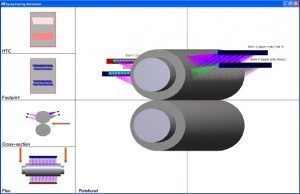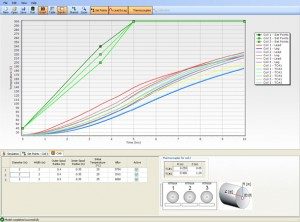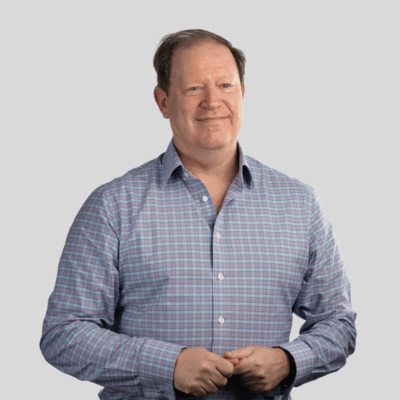Posted on: 21st January 2016 by Kyle Smith
In today’s competitive marketplace and with continuing slow global economic growth, aluminium rolling companies are under constant pressure to improve their products and processes to deliver increased customer satisfaction and loyalty and, ultimately, greater financial returns. Companies are seeking to improve product quality, increase the utilisation of their machines and to reduce operating costs.
To achieve world-class product quality and machine performance often requires the solution of difficult problems. These may relate to the complexity of the product metallurgy, the evolution of the product surface during the process, the need for precise control of product dimensions and residual internal stresses or the need to overcome machine constraints.
To solve the most challenging problems requires a deep technical understanding provided only by experienced aluminium experts and this can be enhanced by the application of computer models for increased insight. Examples of challenging problems include the achievement of very tight dimensional control, say the control of thickness and flatness in sheet rolling, and the removal of machine speed limits such as those resulting from vibration of rolling mills.

Innoval adopts this modelling approach in its problem solving and consulting work to improve product quality and process performance for clients. We use our extensive aluminium process and product knowledge to create detailed physically-based process models that enable us to investigate a much wider range of manufacturing parameters than is possible in normal production. If we can recreate a particular problem within the computer then this model becomes a powerful problem-solving tool because of the deeper understanding that the model reveals.
This approach can be used to supplement more traditional approaches to problem-solving such as 6-sigma. For the more complex problems these traditional approaches can fail to identify a solution to the problem if prior knowledge and expertise is not included in the process.
Models can also be used to design and assess new and more efficient practices to improve machine utilisation and performance. Examples of this type of model would be an aluminium rolling model describing the detailed physics of the rolling process and a spray cooling model describing the precise cooling effect of sprays on mills. Using these computer models, new or upgraded aluminium rolling mills and rolling schedules can be designed for optimum performance, as is the case of the Danieli Diamond Mills.

Where appropriate these models can also be implemented on-line to maximise the value of the understanding contained within them. Such on-line models can provide an insight into critical variables within the process that may be impossible to measure. In effect, they allow you to ‘see inside’ the process.
Operating costs can be strongly affected by energy consumption, especially if the plant has processes that involve significant heating of massive objects such as the preheating of aluminium slabs for hot rolling. The energy consumption of these processes can be reduced if there is a good knowledge of the hottest and coldest regions within each slab during the heating cycle. Since these internal temperatures are usually impossible to measure, the only sensible approach is again through physical-based computer modelling of the slabs within the furnace. This approach can deliver significant financial savings whilst maintaining final product quality.
In summary, there can be a significant financial benefit from involving the right technical experts in the solution of the more difficult problems faced by many aluminium rolling plants, in any work to improve product quality and also to reduce operating costs. As industry experts retire or leave the industry, the know-how that has been captured within models can provide valuable continuity for the next generation of technical problem-solvers that are so vital for the future success of the downstream aluminium industry.
This blog post was originally written by Dr Tom Farley who has now left the company. Please contact Kyle Smith if you have any questions.



